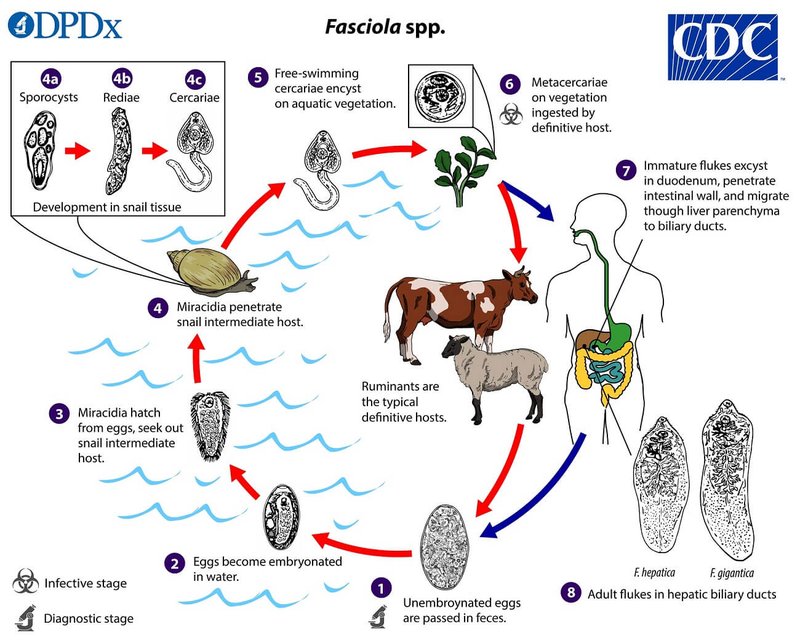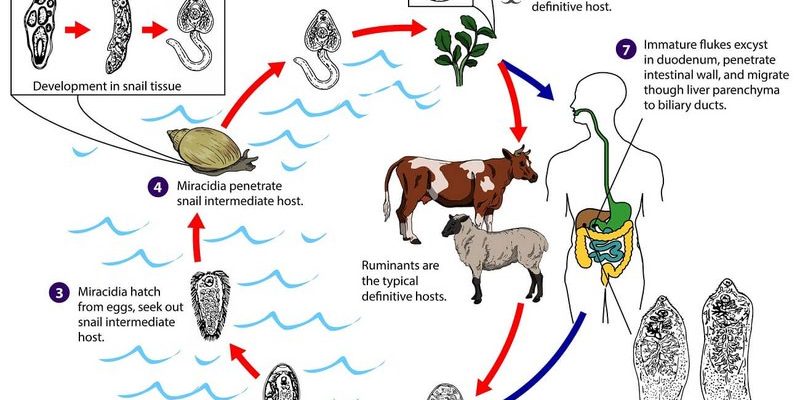
Liver flukes belong to a group called trematodes, and they typically reside in the liver of various hosts, including livestock and sometimes humans. Their life cycle is nothing short of fascinating, involving multiple stages and hosts. So, grab your favorite drink and let’s unpack the secrets behind liver fluke reproduction, from mating to the fascinating journey of their eggs and larvae.
What Are Liver Flukes?
Before we get into the nitty-gritty of their reproduction, it’s important to understand what liver flukes are. These flatworms can be as long as several centimeters and are known for their leaf-like shape. They typically inhabit the bile ducts of the liver in their hosts.
Liver flukes are primarily found in livestock, especially cows and sheep, but they can infect humans too. They are often transmitted when a host consumes contaminated water or vegetation where the fluke’s larvae have settled. Once inside, they can wreak havoc, leading to health issues like liver damage or bile duct obstruction.
The Life Cycle of Liver Flukes
To appreciate their reproduction, we need to explore their life cycle, which is a bit like a relay race. Liver flukes go through several stages:
1. Egg Stage: When mature liver flukes are in a host, they lay eggs, which are then expelled in feces.
2. Miracidium Stage: The eggs hatch in water, releasing larvae known as miracidia.
3. Snail Host: The miracidia must infect a specific type of snail, where they develop further.
4. Cercaria Stage: Inside the snail, the fluke transforms into cercariae, which then leave the snail in search of a new host.
5. Metacercaria Stage: These larvae encyst in plants or fish, ready to be ingested by the next host.
This cycle showcases their adaptability and resilience in the face of environmental challenges.
Mating Rituals of Liver Flukes
You might think that the mating of liver flukes is a simple affair, but it’s actually quite intricate. Most liver flukes are hermaphroditic, meaning they possess both male and female reproductive organs. This gives them some flexibility in reproduction, as mating can occur in various ways.
When two liver flukes meet, they engage in a unique courtship. They will often wrap around each other, allowing their reproductive organs to align. This ensures that both can exchange sperm, fertilizing each other’s eggs. This *mutualistic* approach increases their chances of reproducing successfully and ensures that the next generation of flukes can eventually develop in a suitable host.
Egg Production
Once fertilization occurs, the female fluke starts producing eggs. Here’s where it gets interesting. The number of eggs can be staggering—some flukes can lay thousands of eggs each day!
These eggs are oval and often have an operculum, which is like a little lid. This design allows the eggs to float in water, making it more likely that they’ll find their way to a suitable environment to hatch.
Eggs’ Success Factors:
– Temperature: Warmer water temperatures can accelerate their development.
– Oxygen Levels: Eggs need sufficient oxygen to thrive as they develop into the next stage.
– Host Availability: The presence of snails in the environment is crucial for the life cycle to continue.
This egg production ensures that even if a few flukes don’t make it, many others will likely survive and continue the cycle.
The Journey of Larvae
As we follow the eggs on their journey, it’s essential to highlight what happens once they hatch. The miracidia larvae are like little adventurers; they need to find their way to a snail quickly, or they risk dying.
Once they enter the snail, they undergo significant changes. This stage is crucial for their development into cercariae. Interestingly, the fluke can manipulate the snail’s behavior, sometimes making the snail more likely to be eaten by a grazing animal—this is an effective survival tactic for the fluke!
Transformation in the Snail
Inside the snail, the larvae undergo a process called *asexual reproduction*. This means they can multiply without needing to mate. The newly formed cercariae will break free from the snail, swimming around in the water until they find a suitable host.
This transformation is a fundamental part of their life cycle; if the cercariae can’t find a host, they’ll eventually die. It’s a high-stakes game of survival, and their ability to swim increases their odds of success.
How Do They Affect Their Hosts?
Once inside a new host, liver flukes can cause significant problems. They can damage the liver and bile ducts, leading to a range of health issues. In livestock, this means loss of productivity and increased veterinary costs. In humans, the consequences can be even more serious, including serious liver damage.
You might be wondering how to prevent such infections. The best way is to avoid consuming contaminated water or undercooked food that may contain flukes. Ensuring good hygiene and controlling snail populations in farming areas can also help mitigate the risk.
Controlling Liver Fluke Populations
Controlling liver fluke populations in livestock often involves a mix of management practices:
– Regular Deworming: Treating livestock regularly can help clear infections.
– Pasture Management: Rotating grazing areas can reduce the exposure of animals to infected snails.
– Water Management: Keeping water sources clean and free from contamination is essential.
These measures not only protect the livestock but can also be beneficial for human health, reducing the risk of transmission.
Understanding liver fluke reproduction is not just a matter of curiosity—it has real implications for agriculture and public health. Their complex life cycle and reproductive strategies highlight their adaptability as parasites. By knowing how they reproduce and develop, we can better protect ourselves and our livestock from these unwanted guests.
So, the next time you hear about liver flukes, remember: they’ve got a fascinating, albeit troublesome, life story of survival and reproduction. Keeping an eye on them is essential for a healthy ecosystem and agricultural success.

